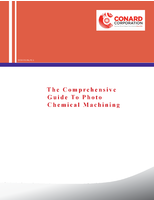RF & Microwave Simulation Software reduces development time.
Press Release Summary:
Used for 3D full-wave electromagnetic field simulation, HFSS(TM) v12.0 helps engineers design, simulate, and validate behavior of RF, microwave, and millimeter-wave devices in wireless communication and defense systems. Mesh generation, solver technologies, and adjoint derivative computation, along with domain decomposition, lend to scale and speed at which engineers can simulate and design. Also, curvilinear elements and mixed element orders promote accuracy.
Original Press Release:
Ansys Releases HFSS 12.0 Engineering Simulation Software
Industry-Standard RF & Microwave Simulation Solution Delivers Significant New Domain Decomposition Technology for High-Performance Computing
SOUTHPOINTE, PA - September 17, 2009 - ANSYS, Inc. (NASDAQ: ANSS), a global innovator of simulation software and technologies designed to optimize product development processes, today announced the release of HFSS(TM) 12.0 software, the industry-leading technology for 3-D full-wave electromagnetic field simulation. The product, part of the Ansoft suite, helps engineers design, simulate and validate the behavior of complex high-performance radio frequency (RF), microwave and millimeter-wave devices in next-generation wireless communication and defense systems. A key high-performance computing (HPC) enhancement, domain decomposition, allows engineers to simulate and design at a scale and speed never before possible. Users of this latest version of HFSS software can achieve a dramatic reduction in development time and costs while at the same time realizing increased reliability and design optimization.
With the release of HFSS 12.0, ANSYS follows through on its commitment to deliver technology with unequalled depth and unparalleled breadth. HFSS 12.0 is a major step forward for three-dimensional full-wave electromagnetic field simulation. The software includes key updates in mesh generation, solver technologies, and enhancements to the user interface and the modeler. A new, faster and more robust meshing algorithm generates higher-quality, more efficient tetrahedral meshes. The most significant solver technology enhancement is domain decomposition, a technique that allows HFSS to exploit HPC capabilities to solve electromagnetic field problems of unprecedented size and scope. Other important enhancements include mixed element orders, curvilinear elements, and adjoint derivative computation. Ease of use and automation in the user interface have been improved and include additional modeler capabilities such as sheet wrapping and imprinting. These advances in HFSS 12.0 enable electrical engineers to expand their solution capability, exploit HPC hardware and fully integrate electromagnetics analysis into their Simulation Driven Product Development(TM) processes.
"HFSS 12.0 is a breakthrough in high-frequency electromagnetic field simulation," said Zol Cendes, chief technology officer and general manager at Ansoft. "For the first time, engineers are able to solve vast electromagnetic field problems with speed, efficiency and accuracy. Because of domain decomposition, microwave and electronics engineers now have the opportunity to successfully address a new range of problems containing hundreds of millions of unknowns that previously could not be addressed by simulation. The ANSYS focus on developing simulation technology that takes full advantage of modern computer hardware solutions means that customers will have future capabilities that, today, we can only imagine."
The new domain decomposition technology in HFSS 12.0 software allows efficient and highly scalable parallelized simulations across multiple computer cores including networked cores. In running a 15-GB benchmark on an HP 7880 workstation, domain decomposition using eight cores exhibited an 8.8-times speedup with a 33 percent memory savings compared to a single-core direct solve.
Curvilinear elements and mixed element orders allow for higher accuracy and more efficient distribution of computational resources. Curvilinear elements model the fields exactly on curved surfaces and in these cases provide higher accuracy even with a coarser mesh discretization. Mixed element orders allows for an automated and judicious localized application of element order. Smaller features are solved more efficiently by lower-order elements while large homogenous regions benefit from higher-order elements, all element orders being automatically and appropriately "mixed" in one mesh.
Molex Incorporated, a leading supplier of electronic connectors and interconnect products, was among the organizations that participated in beta testing the new release. The company investigated a number of features, including the new TAU volumetric meshing technique, whose robust tet mesh elements reduce the overall load on the solver. "The new TAU meshing and mixed element orders technology in HFSS 12.0 will allow Molex engineers to more accurately and efficiently simulate and design," said Dave Dunham, engineering director at Molex. "We have more than doubled productivity with the implementation of HFSS 12.0 in our design flow."
Adjoint derivative computation provides a highly efficient and accurate procedure to evaluate the derivatives of S-parameters with respect to geometric and material model parameter variations. This technique provides sensitivity information for use in device tuning, tolerance evaluation and optimization. These derivatives are employed to speed up the sequential nonlinear programming (SNLP) optimizer included with the Optimetrics(TM) add-on program.
New features in HFSS 12.0 software include:
For downloadable images, visit www.ansys.com/newsimages.
About ANSYS, Inc.
ANSYS, Inc., founded in 1970, develops and globally markets engineering simulation software and technologies widely used by engineers and designers across a broad spectrum of industries. The Company focuses on the development of open and flexible solutions that enable users to analyze designs directly on the desktop, providing a common platform for fast, efficient and cost-conscious product development, from design concept to final-stage testing and validation. The Company and its global network of channel partners provide sales, support and training for customers. Headquartered in Canonsburg, Pennsylvania, U.S.A., with more than 60 strategic sales locations throughout the world, ANSYS, Inc. and its subsidiaries employ over 1,600 people and distribute ANSYS products through a network of channel partners in over 40 countries. Visit www.ansys.com for more information.
ANSYS, ANSYS Workbench, Ansoft, AUTODYN, CFX, FLUENT, and any and all ANSYS, Inc. brand, product, service and feature names, logos and slogans are registered trademarks or trademarks of ANSYS, Inc. or its subsidiaries in the United States or other countries. All other brand, product, service and feature names or trademarks are the property of their respective owners.




